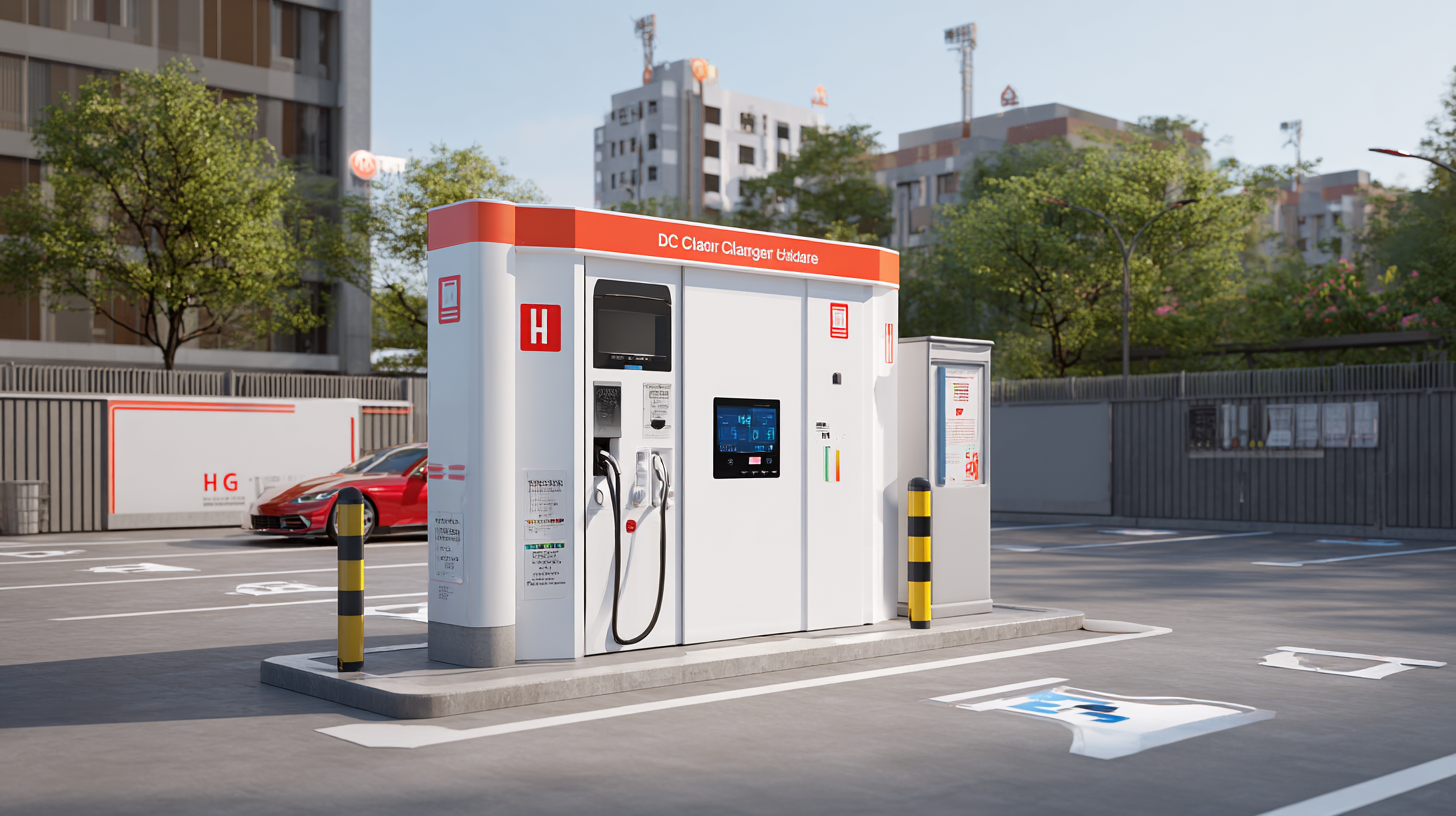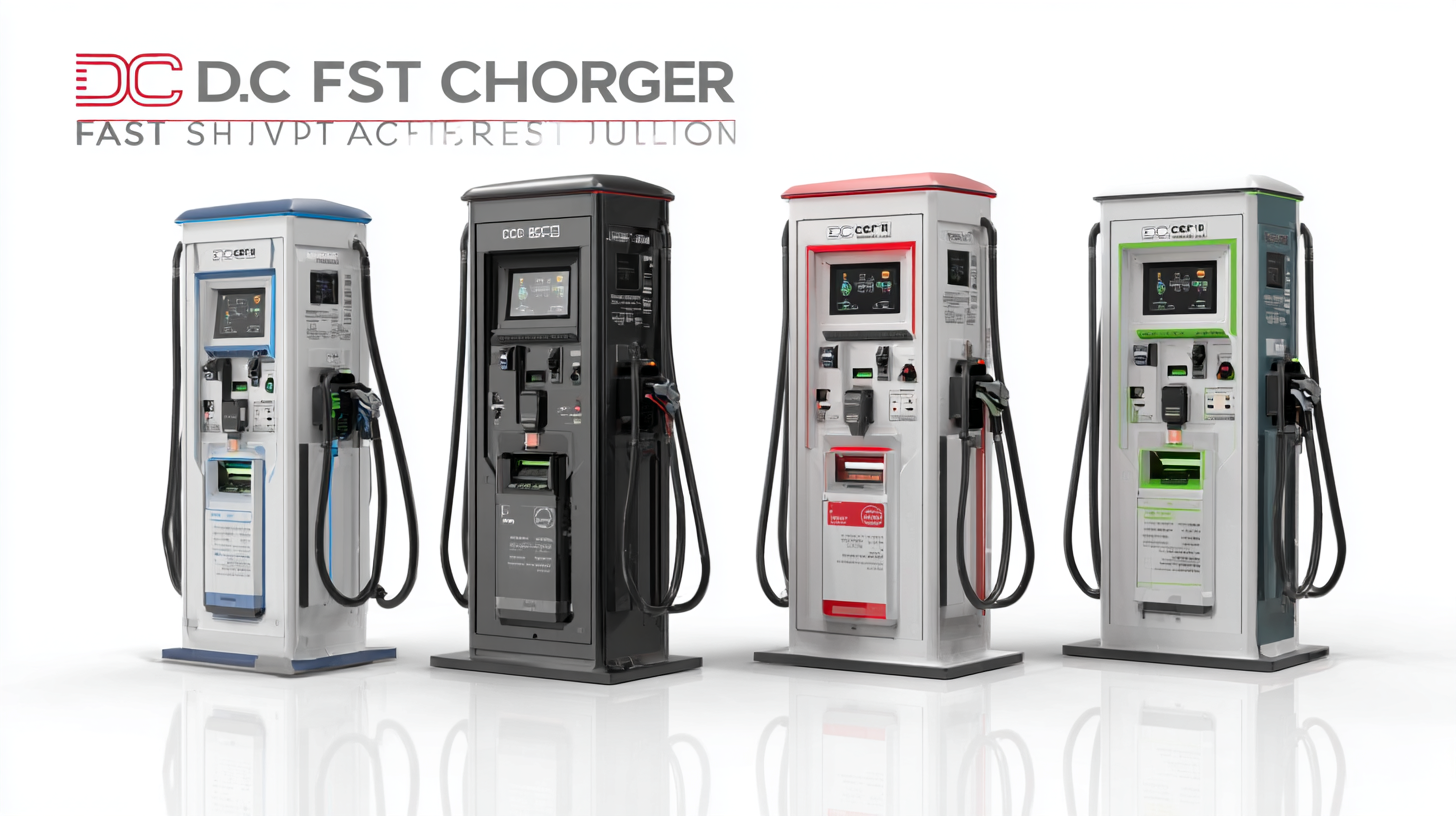In recent years, the electric vehicle (EV) market has witnessed unprecedented growth, with the International Energy Agency (IEA) reporting that global EV sales reached a record 10 million units in 2022, a 55% increase from the previous year. This surge in EV adoption has driven the demand for efficient charging solutions, particularly DC Fast Charger stations, which are vital for minimizing charging time and enhancing the EV ownership experience. According to a report by MarketsandMarkets, the DC fast charging market is projected to grow from $1.01 billion in 2023 to $5.06 billion by 2028, reflecting the increasing need for rapid charging infrastructure. As the landscape of electric mobility evolves, understanding the unique features and applications of these charging stations is crucial for consumers and businesses alike. This blog aims to explore the various aspects of DC Fast Charger stations and provide guidance on how to choose the right one to meet specific needs and preferences.

When it comes to selecting a DC fast charger, understanding the key specifications such as power levels and charging speeds is crucial. DC fast chargers are designed to deliver significantly higher power compared to traditional chargers, typically ranging from 25 kW to well over 350 kW. This increased power allows electric vehicles (EVs) to charge much more quickly, often reaching 80% charge in as little as 30 minutes, depending on the vehicle and charger compatibility.
Additionally, the charging speed is not solely determined by the power output of the charger; it also depends on the vehicle’s maximum charging capacity and battery size. For instance, a vehicle that can handle a maximum of 150 kW will not charge faster at a 350 kW station compared to a 150 kW charger. Therefore, when choosing a DC fast charger, it's essential to consider both the output power of the charger and the specifications of the EV in question to ensure optimal performance and efficiency. Being informed about these specifications can lead to more sustainable and effective charging solutions for all EV users.
| Charger Type | Power Level (kW) | Charging Speed (miles/min) | Connector Types | Ideal Applications |
|---|---|---|---|---|
| Level 1 Charger | 3.7 kW | 2 miles/min | J1772 | Home charging, Trickling charge |
| Level 2 Charger | 7.2 kW | 4 miles/min | J1772 | Commercial charging, Public charging stations |
| DC Fast Charger | 50 kW | 15 miles/min | CHAdeMO, CCS | Highway travel, Quick charging |
| Ultra-Fast Charger | 150 kW | 30 miles/min | CCS | Long-distance travel, Fleet charging |
When exploring DC fast charger connector types, three primary standards emerge: CCS, CHAdeMO, and Tesla. While CHAdeMO stations still outnumber CCS ones, the latter has gained traction, particularly with automakers opting for compatibility with CCS. This shift is highlighted by Nissan's recent decision to adopt CCS for its upcoming EV, signaling a significant move away from CHAdeMO. The dominance of CCS is further reinforced as major charging networks expand their offerings to accommodate this standard, thereby streamlining the charging experience for consumers.

When choosing a DC fast charger station, it's crucial to consider the connector type. Here are a few tips: First, verify your vehicle's compatibility with the connector types available in your area. If you're a frequent traveler, opt for charging networks with a significant presence that supports multiple connector types to avoid inconvenience. Additionally, keep an eye on evolving technologies, such as the new CHAdeMO 3.0 standard, which promises backward compatibility with CCS, offering more options in the future. Flexibility and foresight in choosing charging stations can enhance your electric vehicle experience significantly.
The demand for electric vehicles (EVs) has surged in recent years, prompting significant growth in the market for DC fast charging stations. By 2025, the global market for these stations is projected to expand substantially, reflecting the increasing need for efficient, high-speed charging solutions. Factors driving this growth include government incentives for EV adoption, an expanding network of charging infrastructure, and advancements in battery technology. As more consumers turn to electric vehicles as a practical and environmentally friendly alternative to traditional gasoline-powered cars, the urgency for accessible and reliable charging options grows.
Among the emerging trends, the integration of smart technology into DC fast chargers stands out. These innovations allow for features such as mobile app connectivity, real-time monitoring, and payment processing, enhancing user experience and convenience. Additionally, the expansion of charging stations in urban areas and along highways is critical for supporting long-distance travel and alleviating range anxiety among potential EV buyers. As the infrastructure develops, the focus will also shift towards ensuring compatibility with various EV models and increasing charging speed to meet consumer expectations, ultimately shaping the future landscape of electric mobility.
The placement and accessibility of DC fast chargers are pivotal elements in enhancing electric vehicle (EV) adoption. According to a report by the International Energy Agency (IEA), as of 2021, there were over 1.8 million publicly accessible chargers worldwide, yet only 300,000 were DC fast chargers—a clear indication of the need for increased infrastructure. Strategic placement in high-traffic areas, such as shopping centers, highway rest stops, and urban hubs, ensures that EV drivers can conveniently recharge. This not only minimizes charging time, taking as little as 30 minutes for an 80% charge, but also eases range anxiety among potential users.

Moreover, accessibility must consider demographic and geographic factors. A study by the U.S. Department of Energy revealed that urban areas with higher populations significantly drive demand for fast chargers. However, rural areas often lag behind, missing out on potential EV users. To address this, developers should focus on equitable distribution of charging stations to cater to diverse communities. By assessing local needs and utilizing data analytics, stakeholders can identify prime locations for new installations, ultimately fostering an inclusive and accessible EV charging ecosystem.
When choosing the right DC fast charger for your business, several critical factors must be considered to ensure optimal performance and return on investment (ROI). According to the International Energy Agency (IEA), the global EV market is projected to reach 145 million vehicles by 2030, dramatically increasing the demand for efficient charging solutions. Selecting a charger that can accommodate various EV models and ensure rapid charging capabilities is crucial for attracting customers and maximizing usage. Businesses should evaluate the charger’s output power, charging times, and compatibility with different EV brands.
Another essential aspect to consider is location and installation costs. A report by Navigant Research highlights that investing in strategically placed charging stations can lead to a significant increase in foot traffic and, consequently, revenue. Moreover, calculating the potential ROI involves factors such as installation costs, expected usage rates, and local incentives for green investments. Businesses that carefully assess these components can make informed decisions that not only benefit their operations but also contribute to the growing sustainability movement.
This bar chart illustrates the key features and typical applications of various types of DC fast chargers that businesses can consider when choosing the right one.
